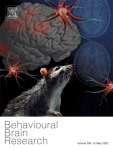- EN - English
- CN - 中文
A Simple and Fast Battery Test for Phenotypic Characterization of Mice
小鼠表型特征的简易快速系列测试试验
(*contributed equally to this work) 发布: 2020年04月05日第10卷第7期 DOI: 10.21769/BioProtoc.3568 浏览次数: 4596
评审: Edgar Soria-GomezThiago Moirinho ReisAna Martin

相关实验方案

基于 rAAV-α-Syn 与 α-Syn 预成纤维共同构建的帕金森病一体化小鼠模型
Santhosh Kumar Subramanya [...] Poonam Thakur
2025年12月05日 487 阅读
Abstract
Despite the great number of test batteries already known to assess the behavior of genetically modified and inbred strains of mice, only a few of them focus on basic neurological parameters. The purpose of the battery test proposed is to settle a specific methodology to characterize the phenotype of neurological disease models in mutant or genetically modified mice. This methodology is simple and efficient in order to analyze several parameters, including general activity, sensory nervous system, sensorimotor system, central nervous system and autonomous nervous system. This can aid the choice of specific additional tests as well as the determination of an interrelationship among phenotypic alterations observed. Although being efficient for a first analysis of a mouse model, interpretation of the results must be carefully made because phenotype manifestation may vary due to many parameters, including mouse strain, environmental and housing condition, animal-experimenter interaction, sample size and tests order. It is important to consider as a critical point if handling procedures are aversive. The results acquired with the analysis of 18 parameters together provide preliminary data to characterize mouse phenotype and helps selecting more specific tests.
Keywords: General activity (一般活动)Background
Laboratory mice have been used as models for biomedical studies, offering a variety of genetic models such as isogenic strains, spontaneous mutants and genetically modified animals. After the implementation of genetic modification, mice became an essential tool in neuroscience research, allowing researchers to investigate the role of individual genes on development and behavior. Furthermore, mice have been the main mammalian models and genetic organisms due to their 85% homology when compared to humans (Pritchett-Corning et al., 2015), including similarities with the functionality of the human brain such as anxiety-like behavior and other emotional responses (Van Meer and Raber, 2005). Thus mice became an essential part of efforts in prevention and treatment of many diseases, but also to test toxicity and adverse effects of biological and chemical substances and in researching the efficacy and safety of new drugs (McLeod and Hartley, 2017).
Mice behavior can be evaluated in several ways, including direct observation and a wide variety of behavioral tests comprising a single task or multiple tests, using or not automated behavioral response assessment (Wahlsten, 2011). The choice of tests applied in the course of an experiment is directly related to the question to be answered. A battery of tests is proposed to evaluate the basic motor and sensory functions. Some of the tests described in our protocol have been grounded on SHIRPA procedure (Rogers et al., 1997) The open field test (OFT) can be used to evaluate general activity, but also parameters related to sensorimotor, autonomous and sensory nervous systems (Yamamoto et al., 2019). Sensory information provided by the vestibular system is essential in spatial memory process (Manes et al., 2019), sensorimotor activity can be defined as the relationship among sensory perception, movement, emotion and cognition (Iliadi et al., 2016). Also, autonomic nervous system is responsible to maintain homeostasis in the organism (McCorry, 2007).
Here, we aim to develop a specific methodology to evaluate behavioral parameters of laboratory mice in order to characterize the phenotype of neurological disease models in mutant or genetically modified mice and to evaluate the effects and toxicity of substances.
Materials and Reagents
- Paper towels
- Custom-made arena built of laminated wood round floor (40 cm diameter) and metallic painted walls (25 cm)
- Personal protective equipment (e.g., gloves, mask, protective apparel)
- Wire grid
- Pen and logbook
- Laboratory-bred mice
Specific pathogen-free (SPF) mice were obtained from the animal facility of the Department of Immunology, Institute of Biomedical Science, University of São Paulo, Brazil. The animals were housed in individually ventilated cage (Alesco Industry and Commerce, Monte Mor, Brazil) with pine shavings for bedding, under controlled room temperature (22 ± 5)°C and humidity range from 45% to 65%. The room was kept on a 12/12 h light/dark cycle (lights on at 07:00 AM) with artificial light. Animals had unrestricted access to filtered and autoclaved water and autoclaved commercial pellets formulated according to the AIN93M rodent diet (Nuvilab, Quimtia, Paraná, Brazil). A total of 26 12-week-old, BALB/cJ mutant cruza pernas (“leg crossing”; abbreviation crup) (n = 13) and BALB/cJ (n = 13) male mice were used. The crup mutant strain arose from an ENU (N-ethyl-N-nitrosourea) mutagenesis screen in BALB/cJ genetic background described by Massironi (2006). - 5% ethanol
Equipment
- Anatomic forceps
- Video camera
- Fixed iron bar for camera placement above arena center
- Video tracking system (Noldus Information Technology, model: Ethovision XT software ) connected to a personal computer (optional)
Software
- Ethovision XT (Noldus, http://www.noldus.com/animal-behavior-research/products/ethovision-xt)
Computer software for automated tracking analysis, or any other software for behavior analysis. - Prism 8 (GraphPad Software, http://www.graphpad.com). Computer software for statistical analyses, or any other software for statistical analysis
Procedure
文章信息
版权信息
© 2020 The Authors; exclusive licensee Bio-protocol LLC.
如何引用
Garcia-Gomes, M. S. A., Zanatto, D. A., Yamamoto, P. K., Wadt, D., Antiorio, A. T. F. B., Aleman-Laporte, J., Alexandre-Ribeiro, S. R., Marson, G. A., Guizzo, C., Massironi, S. M. G., Bernardi, M. M. and Mori, C. M. C. (2020). A Simple and Fast Battery Test for Phenotypic Characterization of Mice. Bio-protocol 10(7): e3568. DOI: 10.21769/BioProtoc.3568.
分类
神经科学 > 感觉和运动系统 > 动物模型
神经科学 > 神经系统疾病 > 动物模型
神经科学 > 行为神经科学 > 实验动物模型
您对这篇实验方法有问题吗?
在此处发布您的问题,我们将邀请本文作者来回答。同时,我们会将您的问题发布到Bio-protocol Exchange,以便寻求社区成员的帮助。
提问指南
+ 问题描述
写下详细的问题描述,包括所有有助于他人回答您问题的信息(例如实验过程、条件和相关图像等)。
Share
Bluesky
X
Copy link





.jpg)








